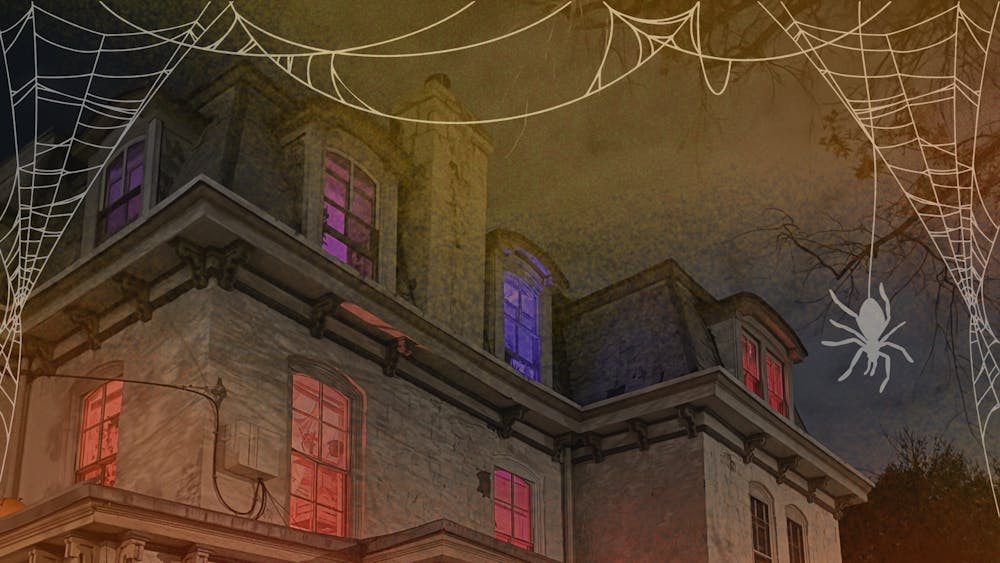“Why are you dressed so scary?”
“It’s Halloween.”
OG members of the Mean Girls fandom will remember this iconic moment from the 2004 film. For Halloweekend, Cady Heron elects to be a zombie bride—fashioning a blood—stained wedding dress, black wig, and fangs. However, immediately upon stepping into the room, she is overcome with sheer embarrassment: her costume is the only scary one. Other attendees’ outfits are hip, glamorous, and sexy, especially the Plastics’ lingerie paired with soft animal ears. After Cady receives many judgmental looks, clique leader Karen Smith asks her the above question. The protagonist is bewildered: haven’t scary festivities defined this holiday for centuries?
Without a doubt, this presumption is completely logical. As a U.S. holiday, Halloween initiated from the Gaelic ritual of Samhain. Starting in approximately 800 CE, Celtic observers incorporated costumes into this festival—pagans utilized scary costumes to ward off the post–harvest season from evil spirits. Succeedingly, medieval Christianity adopted this day circa 1100 CE: the United Kingdom popularized representations of death or paranormality for All Hallow’s Eve. These costumes have evolved as trademarks of Halloween. Each archetype represents the supernatural, invoking a connotation of horror, fear, or troublesome disturbance.
Interestingly, children most often wear costumes reflecting Halloween’s authentic origins. In suburban communities, trick–or–treaters are usually between ages 4–12: these kids often sport the generic skeleton, ghosts, witch, and zombie looks. Notably, this age’s “scary” costumes tend to obscure the entire face and body. For example, Spirit Halloween’s “Kids Grim Reaper” costume consists of a hood, black cloak, and scythe. These styles are particularly enjoyable for children to wear, since they are most likely to make passersby jump out of their skins. Mean Girls describes “children dressing up in costumes” as the “regular world” on October 31st—observing a classic American tradition, rooted in European immigrant heritage.
However, this film proclaims that a parallel universe exists on Halloween, “where a girl can dress like a total slut and receive no judgement.” This “girl world” heavily influences the costume choices of teens and young adults. In college, the trendiest outfits are not “scary,” but rather erotic; typical evening wear includes tube tops, leather pants, and spaghetti straps. Many groups dress as "concepts," or sexualize a common popular culture trope.
A popular cowgirl image, for instance, consists of a neon miniskirt, corset tops, and a pink hat, all coated with glitter sequins. This design starkly contrasts the typical cinematic cowgirl’s flannel shirt, jeans, and leather boots. Additionally, throughout the 21st century, youth magazines and social media ads have publicized the "yassifcation" of more cliche costume ideas. This year, Teen Vogue’s “52 Best Halloween Costumes for Teens” featured an “alien”: this fast–fashion suit consists of a “Shiny Metallic Crop Top + Flared Skirt” + “Head Band.” Does this vision of extraterrestrial life match Steven Spielberg’s E.T.? Not quite.
Many believe that identity politics guide this trend of Halloween dress. The Michigan Daily credits the Sexual Revolution with popularizing promiscuous women’s costumes. Leaders such as Betty Dodson promoted women’s rights to casual sex, with more liberal fashion options symbolizing this freedom. Correspondingly, second–wave feminists integrated Halloween costumes into their activism: risqué outfits allowed women to reclaim ownership of their beauty from patriarchal norms. This connotation of empowerment accompanied slutty costumes’ persistence into the 21st century. Today, Halloween remains a "communal pageantry" for women—a celebration of personal, unrestricted visions of sexiness.
Historically, the LGBT+ community has also reclaimed Halloween for celebrating open expression. In the 1970s, gay rights advocates embraced this holiday’s “carnivalesque” quintessence. Shortly after the Stonewall Riots, Greenwich Village hosted its first Halloween Parade: Historian Marc Stein explains that paraders “safely expressed nonconformity without being perceived as a threat” to social conservatism’s rise. While sauntering through NYC’s “gayborhood,” openly queer people sported drag, flamboyant colors, and other styles transcending gender normative boundaries. By wearing costumes, these individuals represented their authentic selves—championing otherwise taboo fashions within U.S. dominant culture. Therefore, Halloween later earned the moniker of "Gay Christmas" as a sacred celebration of diverse identities.
Contemporarily, Halloweekend remains a vibrant scene for non-heterosexual/cisgender individuals. This year, UPenn’s Carriage Senior Society hosted Swalloween. As one of the university's few queer–exclusive events, this gathering allowed attendees to sport quirky, kinky outfits and dance to their favorite gay musicians for hours. Additionally, Carriage’s theme remodeled the party’s annual location—Herzog House—as a “Doll House of the Damned.” The dollhouse’s rooms hosted different options for entertainment—a “Butch-er’s Block” for dancing, “Sandbox” with a film screening, and “Ballerina Box” equipped with a piano for show tunes. Herzog’s paintings, musical instruments, and other miscellaneous artifacts only matched the array of guests’ costumes, each a unique creation.
As a kid, October 31st entails pure leisure—the adventures of pranking neighbors and receiving excessive candy. However, this evening contains deeper, personal significance for many adult communities. Through wearing sexy costumes, marginalized voices have uplifted themselves and grasped a satisfying sense of liberality. Therefore, Halloween will always be special for the girls, gays, and theys.

